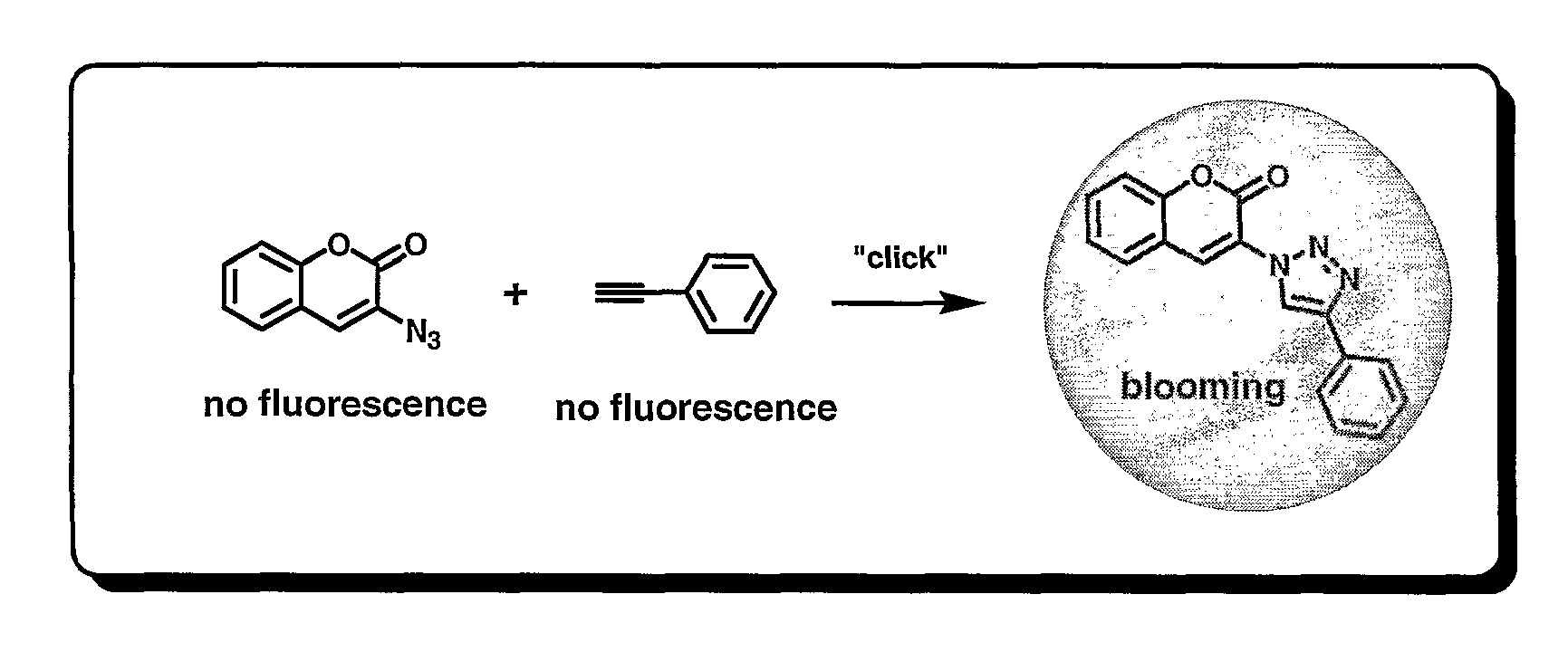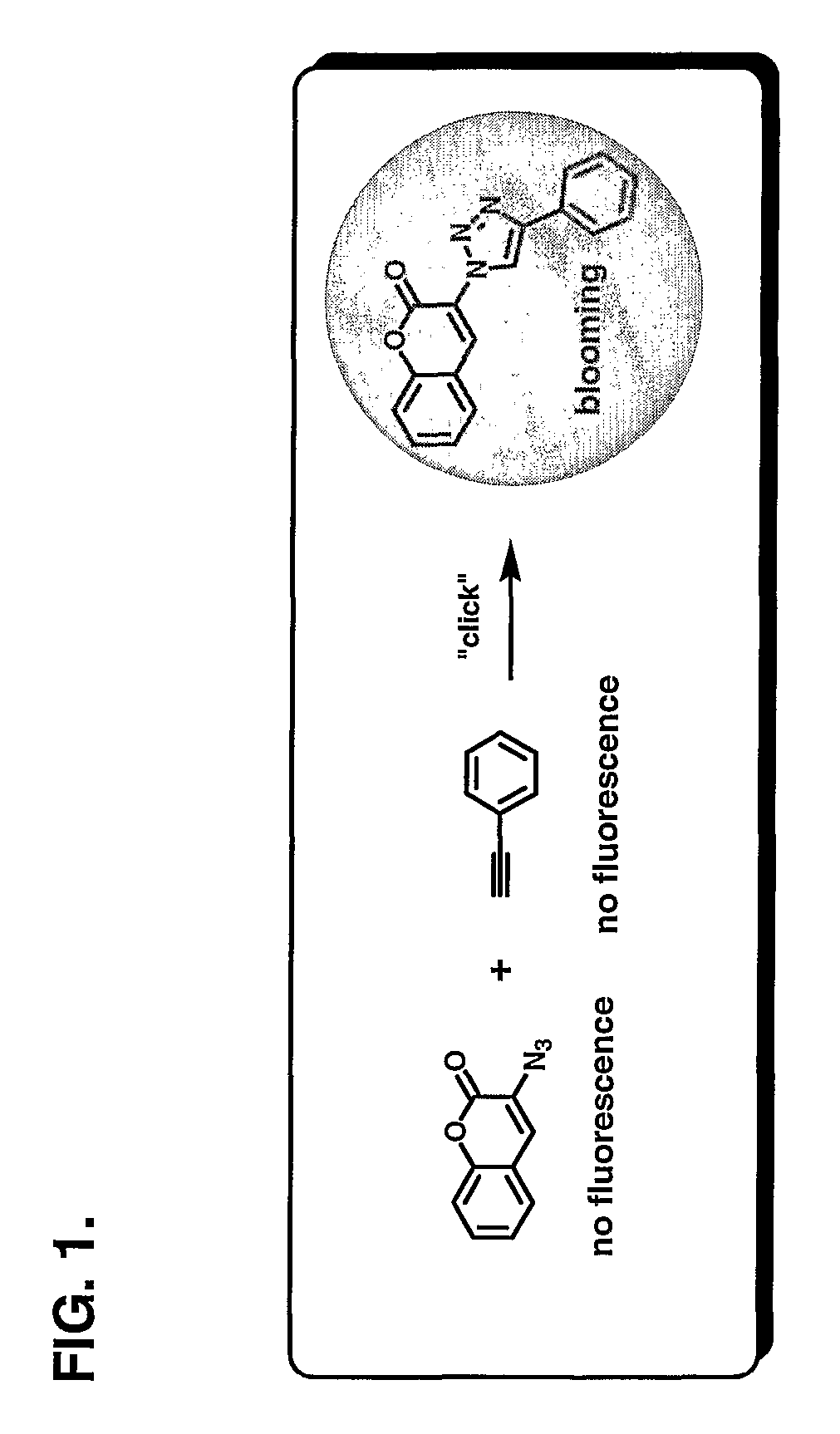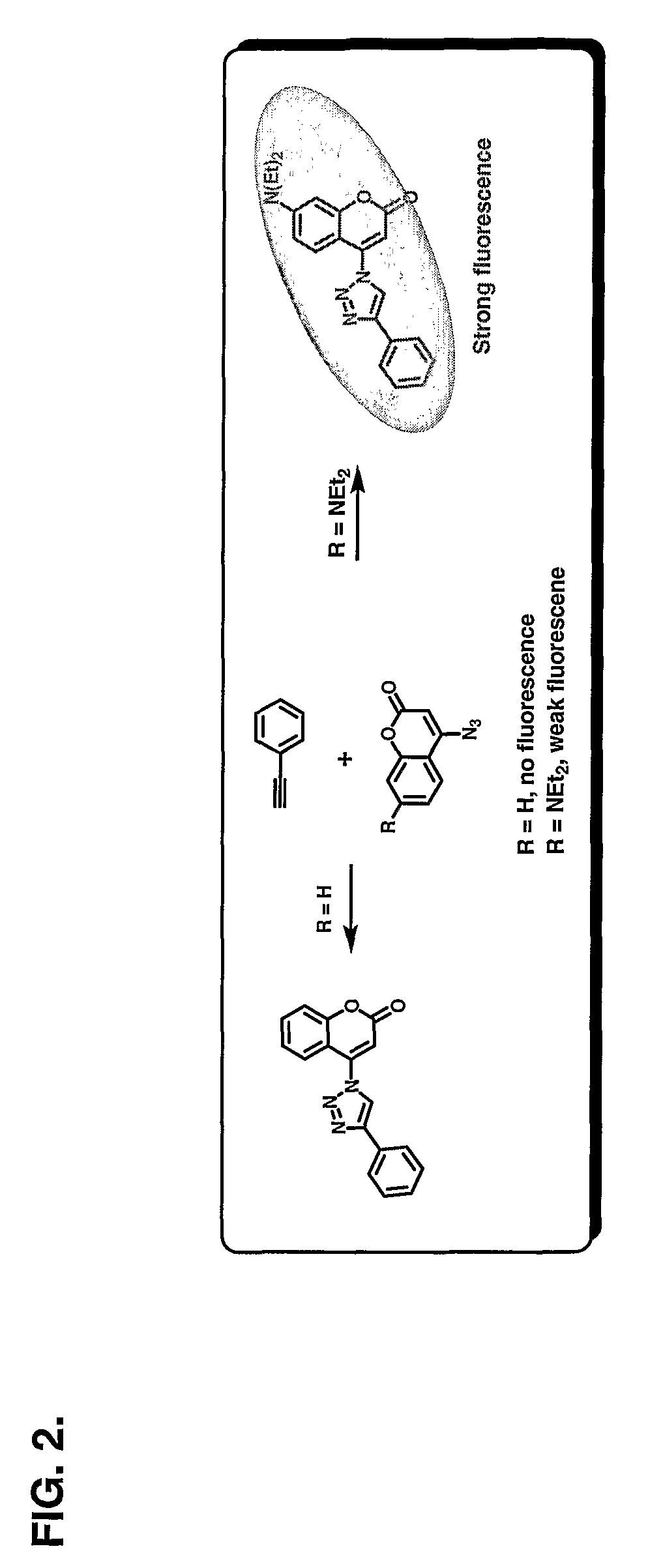Chemoselective fluorgenic molecular linkers and methods for their preparation and use
a fluorescence linkage and fluorescent technology, applied in the field of fluorescent linkage formation, can solve the problems of difficult removal of excess prelabled reagents from intracellular environment or tissues, application of multi-step labeling procedure, and hardly offering chemoselective reactions, etc., and achieves the effect of convenient us
- Summary
- Abstract
- Description
- Claims
- Application Information
AI Technical Summary
Benefits of technology
Problems solved by technology
Method used
Image
Examples
example 1
[0155]This example illustrates the fluorogenic conjugation of 3-azidocoumarin and phenyl acetylene to form the fluorescent linkage product shown below.
[0156]
[0157]Phenyl acetylene (55 mg, 0.5 mmol) and 3-azidocoumarin (100 mg, 0.5 mmol) were mixed with a 1:1 mixture of water and ethyl alcohol (5 mL). Sodium ascorbate (60 μL, 0.06 mmol of freshly prepared 1 M solution in water) was added, followed by the addition of copper sulfate 7.5% in water (20 μL, 0.06 mmol). The heterogeneous mixture was stirred vigorously overnight, and TLC analysis indicated complete consumption of the reactants. The reaction mixture was diluted with water (5 mL), cooled in ice, and the precipitate was collected by filtration. After washing the precipitate with cold water (10 mL), it was dried under vacuum to afford 90 mg (58%) of pure product as an off-white powder. 1H NMR (300 MHz, CDCl3) δ 7.3-7.8 (m, 9H), 8.8 (s, 1H), 9.2 (s, 1H).
example 2
[0158]This example illustrates the conjugation of 4-azidocoumarin and phenyl acetylene to form the linkage product shown below.
[0159]
[0160]Analogously to the procedure described in Example 4, 4-azidocoumarin was used as starting materials to give pure product as an off-white powder; yield 78%. 1H-NMR (300 MHz, CDCl3) δ 6.6 (s, 1H), 7.4-8.0 (m, 9H), 8.2 (s, 1H).
example 3
[0161]This illustrates the fluorogenic combination of phenylacetylene and 7-diethylamino-3-azidocoumarin to form 7-diethylamino-3-(4-phenyl-[1,2,3]triazol-1-yl)-chromen-2-one in an embodiment of the present method.
[0162]
[0163]In a mixture of phenylacetylene (18 mg, 0.17 mmol) and 7-diethylamino-3-azidocoumarin (45 mg, 0.17 mmol) in water and ethyl alcohol (v / v=1:1, 5 mL), sodium ascorbate (34 μL, 0.034 mmol) of freshly prepared 1 M solution in water was added, followed by the addition of copper (II) sulfate pentahydrate 7.5% in water (28 μL, 0.0085 mmol). The heterogeneous mixture was stirred vigorously overnight in the dark at room temperature. TLC analysis indicated complete consumption of the reactants in 12 h. The ethanol was removed and the residue was diluted with water (5 ml), cooled in ice, and then the precipitate was collected by filtration. After washing the precipitate with cold water (10 ml), it was dried under vacuum to afford 53 mg of pure product as a yellow powder (...
PUM
| Property | Measurement | Unit |
|---|---|---|
| wavelength | aaaaa | aaaaa |
| temperature | aaaaa | aaaaa |
| volume | aaaaa | aaaaa |
Abstract
Description
Claims
Application Information
 Login to View More
Login to View More - R&D
- Intellectual Property
- Life Sciences
- Materials
- Tech Scout
- Unparalleled Data Quality
- Higher Quality Content
- 60% Fewer Hallucinations
Browse by: Latest US Patents, China's latest patents, Technical Efficacy Thesaurus, Application Domain, Technology Topic, Popular Technical Reports.
© 2025 PatSnap. All rights reserved.Legal|Privacy policy|Modern Slavery Act Transparency Statement|Sitemap|About US| Contact US: help@patsnap.com



